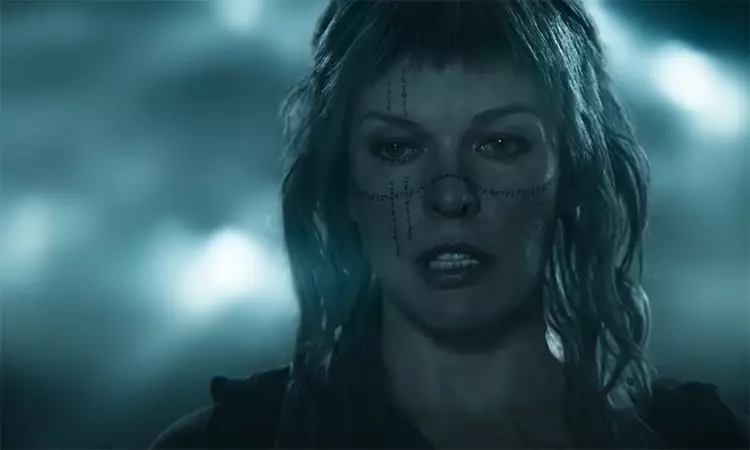“In the Lost Lands,” an adaptation of George R.R. Martin’s short story, represents a grand but flawed voyage into a world where werewolf mythology intersects with elements of post-apocalyptic drama. The film, directed by Paul W. S. Anderson and years in the making, aims to weave a tapestry of adventure, desire, and chaos. However, what audiences receive feels more like an unraveling yarn than a neat closure. The chemistry—or lack thereof—between the leads, Milla Jovovich and Dave Bautista, becomes glaringly evident, detracting from the storytelling and ultimately leading to a less engaging cinematic experience. A film that could have pushed the genre boundaries instead remains entangled in mediocrity.
A World on the Brink
Set against a stark backdrop reminiscent of apocalyptic landscapes, the film’s story mechanic revolves around Gray Alys, a witch with the power to grant wishes, accompanied by Boyce, a gunslinger desperate for connection. The narrative offers potential for profound exploration of themes such as loneliness and desire, specifically within a world ravaged by chaos and manipulation. Yet, the film’s execution overflows with clichés that suffocate any meaningful development. The unreliable pacing drags on, creating moments that feel uninvitingly tedious, inadequate for the adventurous spirits yearning for thrilling escapism.
Failed Action and Flamboyance
While one might expect exhilarating set pieces within a narrative promising high-stakes encounters and desperate missions, “In the Lost Lands” stumbles through its action sequences instead of soaring. The high-wire bus fight serves as a rare moment of inspiration amidst the fog of repetition and uninspired violence. The film’s tone opts for exaggerated explosions, reducing potential intensity into cartoonish pandemonium; a design choice that strips the film of any lasting impact. The sprawling ambition of the plot is marred by inconsistencies that undermine subsequent climactic sequences, leaving the audience without a pulse of excitement to cling to.
Thematic Underpinnings
The thematic layers of “In the Lost Lands” could have offered meaningful commentary on the struggles of powers-motivated quests reminiscent of religious crusades, but these ideas linger just below the surface. Underutilized, the villains—especially the military force led by The Enforcer—slip into distant archetypes that elicit little emotional engagement. It is this absence of depth and character development, paired with awkward dialogue, that further alienates viewers instead of drawing them into the philosophical quandaries hinted at throughout the film.
Visual Aesthetics and Execution
Stylistically, Anderson’s handiwork echoes the familiar visuals seen in his previous ventures, particularly the “Resident Evil” franchise. Gritty, shadow-laden cinematography enhances the film’s intentions, yet the execution feels heavy-handed, betraying the rich nuances of Martin’s storytelling. What could have emerged as a captivating odyssey appears more as a series of well-rendered, yet hollow, scenes. The visual artifice is insufficient to compensate for an uninspired narrative that repeatedly chafes against the bounds of originality.
With all these enchanting threads weaving throughout the canvas of “In the Lost Lands,” it ultimately transforms into a missed opportunity—an adventure that teeters on the edge of greatness yet retreats back into the shadows of forgettable genre films.

